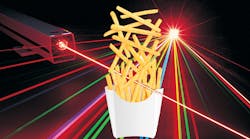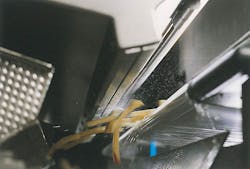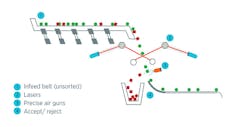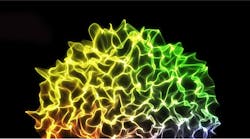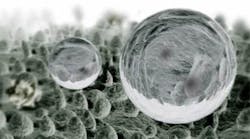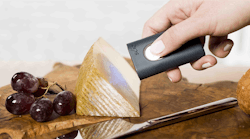Not all potatoes deserve to be peeled, sliced and fried in oil, transforming into French fries. That may sound incredibly unfair to the dirt-born spuds that hold lofty goals of a having a golden brown complexion and being slathered in ketchup, (or mayonnaise for all you metric system users). But some of these root veggies conceal a dangerous secret: cancer-causing carcinogens that only come out when it’s really hot.
The alleged carcinogen in question, acrylamide, forms when the amino acid asparagine in food is heated above 248° F (120° C). The World Health Organization can’t say for certain if it leads to cancer, but tests on rodents and research relating to breast cancer suggest a link. And potatoes, when fried or turned into chips, appear to have the highest concentration of acrylamide.
This doesn’t mean you’ll have to second-guess your decision to super-size your burger combo. The Belgians, who thankfully haven’t remained neutral on subject, have come to the world’s rescue. For the last four years, research and experimentation at the University of Brussel’s photonics lab (B-PHOT) have produced a non-invasive optical spectroscope application that can identify the acrylamide precursors at incredibly high speeds and kick them off the conveyor before being processed.
“The main achievement was the prediction of which raw potatoes would give rise to excessive acrylamide formation during frying, instead of detecting the acrylamide in the French fries themselves.,” says Lien Smeesters, who developed the optical innovation at B-PHOT while working on her doctorate. “It’s not visible with the naked eye. [Acceptable and unacceptable potatoes] look exactly the same.”
Previous methods to root out the potentially killer potatoes are not as accurate and potentially reject usable food.
“Chemical analysis only screens part of batch,” says Smeesters of the previous method, which would accept an entire batch if a small potion passed inspection. “We scan all the food products, because it is non-destructive. And we can scan a few [metric] tons per hour. It’s really, really fast.”
The optical scanner has been integrated into a Tomra peeling and sorting system. The manufacturer’s equipment processes 75% of the global fry supply at volumes from 1,000 to 50,000 kg/ hr.
After the automatic peeler and slicer has its way with them, a batch of raw taters rides a conveyor belt before tumbling in a free fall area. At this point, the laser scanner targets all fries with spatially resolved spectroscopy, scattering when hitting bad tissue. When the system detects a bad potato, a pneumatic air gun blasts it off the belt into a reject bin. Assumably, these are then flown to the Island of Misfit Fries, although they can also be processed at temperatures below the threshold to become mashed potatoes.
The system is still a few years away from commercialization, currently between proof of concept and prototype, Smeesters says. Her spectroscopy work has also led to the better detection of carcinogenic mycotoxins. Future food applications for this include grains, corn, rice, and nuts.
These detection methods will work best the earlier they're used, typically on raw materials right from the farm, Smeesters notes.
“If it can be removed early in the food chain, the manufacturer doesn’t have to spend the processing costs and time on food that is contaminated.”
Smeesters, winner of the Photonics21 Student Award and a finalist for the global Edmund Optics Education Award, envisions the tech scaled down to personal kitchen use someday.
“One day we envisage a world where toxic French fries will be a thing of the past!" she says.










